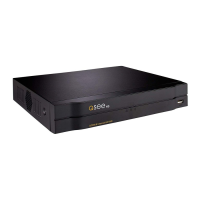A
Andrea MartinezSep 23, 2025
How to connect Q-See QC if UPnP feature is off?
- CcarldavisSep 23, 2025
To fix the issue with your Q-See IP Camera, check your router’s manual to confirm the presence of the UPnP feature and turn it on.

How to connect Q-See QC if UPnP feature is off?
To fix the issue with your Q-See IP Camera, check your router’s manual to confirm the presence of the UPnP feature and turn it on.
Why is network connection not stable on my Q-See DVR?
If the network connection is not stable on your Q-See DVR, ensure a stable network. Resolve any IP address conflicts and MAC address conflicts. Check or replace the network card on your PC or combo DVR.
Why does my Q-See DVR often automatically shut down or stop running?
If your Q-See DVR often automatically shuts down or stops running, several factors could be responsible. First, make sure the input voltage is stable and adequate. Check the hard drive and its cable for any malfunctions. Ensure the device is getting sufficient power. Verify the stability of the front video signal. Improve the working environment conditions if it's too hot or dusty. If none of these steps resolve the issue, the system board may be malfunctioning and require replacement.
What to do if my Q-See DVR system cannot detect hard drive?
If your Q-See DVR system cannot detect the hard drive, start by ensuring a hard drive is installed. If one is already installed, it may be damaged and need replacement. Check the hard drive cable connection to ensure it's secure. If the issue persists, the main board SATA port may be damaged, which would necessitate replacing the main board.
How to fix no video output to one or more channels on Q-See DVR?
If there is no video output to one or more channels on your Q-See DVR, first ensure you are using the correct firmware file. Restore the factory default settings to correct brightness settings. Check the video input signal, and inspect the privacy mask setup. Finally, check or replace the combo DVR hardware if necessary.
How to fix network connection issues on Q-See QC IP Camera?
To fix network connection issues on your Q-See IP Camera, consider the following: - If the router’s built-in firewall is blocking communication, allow communication to pass through specific ports within the firewall. - For routers lacking the UPnP feature, manually forward the ports. - If multiple routers are present on your network, follow the provided solutions.
Why is my Q-See IP Camera having network connection issues?
Your Q-See IP Camera might be experiencing network connection issues due to several reasons. One potential cause is that your router's built-in firewall is blocking communication. To resolve this, allow communication to pass through specific ports within the firewall. Another cause could be that your router doesn't include the UPnP feature; in this case, manually forward the ports. Finally, the presence of multiple routers on your network can also cause issues; follow the solutions presented to resolve this.
What to do if my Q-See QC has network connection problems?
If your Q-See IP Camera is having network connection problems, there are a few things you can check. First, the router’s built-in firewall might be blocking communication, so allow communication to pass through specific ports within the firewall. Second, if your router doesn’t have the UPnP feature, manually forward the ports. Lastly, if you have multiple routers on your network, follow the appropriate solutions to resolve conflicts.
Why doesn't the motion detection function work on my Q-See DVR?
If the motion detection function does not work on your Q-See DVR, adjust the period setup. Adjust the motion detection zone setup. Increase the sensitivity.
Why is there audio when monitoring but no audio when system plays back on Q-See DVR?
If there is audio when monitoring but no audio when the system plays back on your Q-See DVR, enable the audio function. Also, check the video input for playback, especially if the screen is blue.
Safety precautions to prevent product damage or injury before installation or use.
Details various ports like DC 12V, Network, Video In, HDMI, USB, VGA, RS232, Audio, Alarm Block, and eSATA.
Introduces the search window and controls for finding, playing, and locking recorded videos.
Adjusts video image settings, stream types, naming, channel type, and recording schedules.
Sets DVR actions for motion, tampering, video loss, external alarms, and abnormalities.
Configures TCP/IP, ports, PPPOE, DDNS, UPNP, email, and FTP for network connectivity.
Manages user accounts, permissions, and security settings for DVR access.
Lists common DVR problems, their causes, and potential solutions.